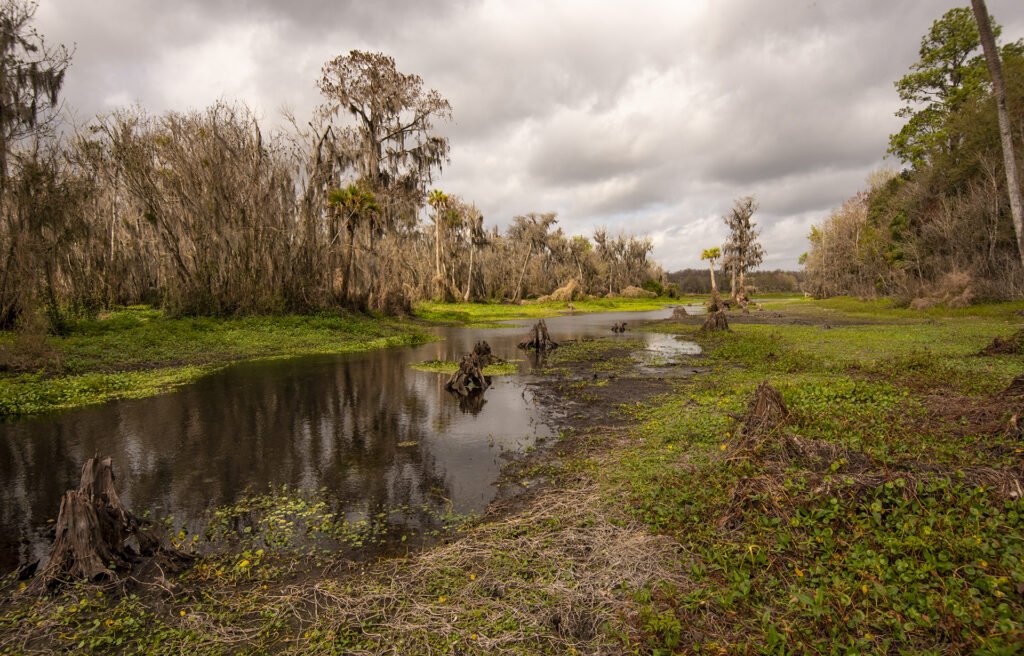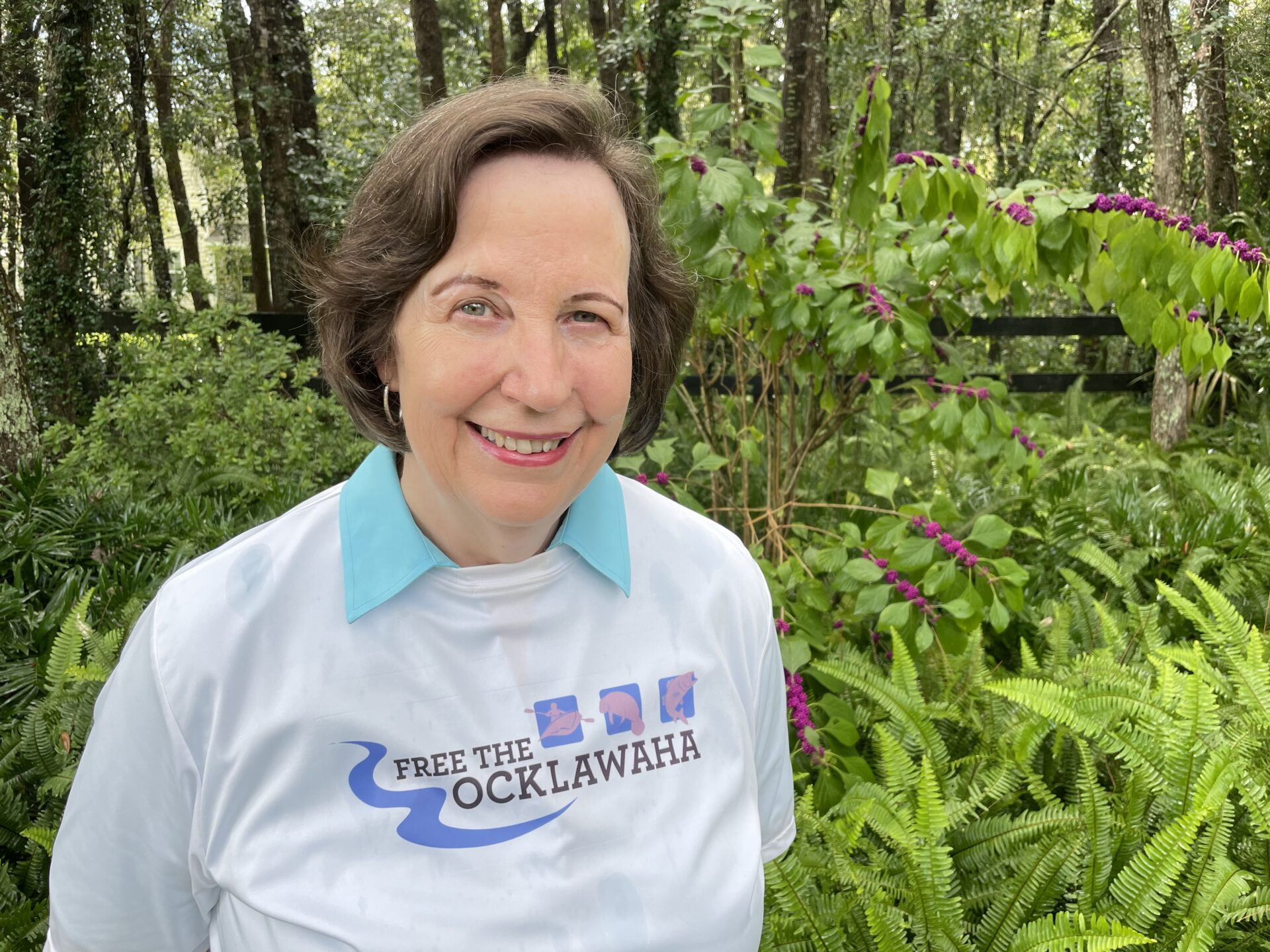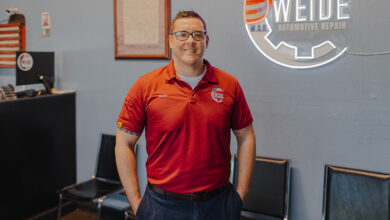For a half-century a war of words has been waged over restoring the fabled Ocklawaha River.
Now, the river’s advocates have united and ramped up the conversation.
 The Ocklawaha River has long fascinated those who have travailed its tea-colored waters. Its cool, winding currents and lush tree canopies make it beautiful and tranquil, a spectacular slice of real Florida. The steamboats that first introduced the outside world to the Ocklawaha – en route to Silver Springs – in the 19th century lured a president (Ulysses S Grant), a president’s widows(Mary Todd Lincoln) and writers from across the land, including Harriet Beecher Stowe.
The Ocklawaha River has long fascinated those who have travailed its tea-colored waters. Its cool, winding currents and lush tree canopies make it beautiful and tranquil, a spectacular slice of real Florida. The steamboats that first introduced the outside world to the Ocklawaha – en route to Silver Springs – in the 19th century lured a president (Ulysses S Grant), a president’s widows(Mary Todd Lincoln) and writers from across the land, including Harriet Beecher Stowe.
Once railroads and highways were built, however, the Ocklawaha’s days as a tourist byway were gone, and it became just another remote river in rural North Florida.
Then came the Cross Florida Barge Canal, and in 1968 the construction of the Rodman Dam and the 9,500-acre Rodman Reservoir, also called Lake Ocklawaha. The reservoir was intended to be a staging area for ships and barges waiting to go through the canal locks to the St. Johns River.
The dam immediately became an environmental flashpoint, the seed for Florida’s modern environmental movement and the source of a debate that has gone back and forth for more than 50 years between those advocating restoring the river to its natural state and those who want to keep the reservoir as it is.
From the outset, restoration advocates contended the dam should be breached because it disrupts the flow of fresh water springs, blocks large numbers of key species of fish and manatee from migrating in and out of the Ocklawaha and Silver Springs and destroys forests and wetlands along the reservoir’s shores and the flooded river’s banks.
Rodman Reservoir supporters, meanwhile, say the dam and reservoir have created an entirely new ecosystem over the years that produce their own environmental benefits, including a potential future drinking water source and economic benefits for Putnam County as one of the nation’s most popular bass fishing holes.
For most of the five decades of debate, the argument for restoration centered largely on the Rodman Dam, the reservoir and the Ocklawaha. Marjorie Harris Carr, who founded Florida Defenders of the Environment in the late 1960’s, led the initial charge to restore the Ocklawaha to its natural state. She sued in federal court to achieve that objective and won, ultimately leading President Richard Nixon to defund the Cross Florida Barge Canal Project in 1971, declaring it “potentially environmentally damaging.” Work on the canal stopped almost instantly, never to resume.
But the Rodman Dam and reservoir remained … and remain. And so, does the pitched debate over restoration of the river.
Changing the conversation
From the start, the argument has largely centered on Carr’s initial key point: the dam damaged nature by flooding the river and its wetlands and forests, causing harm to water resources, fish and wildlife and the river itself. The Ocklawaha should be returned to its natural state.
Over the years that argument won its share of support. The Florida Department of Environmental Protection backed restoration early on. So did Govs. Askew, Graham, Martinez, Bush and Crist. The St. Johns River Water Management District has weighed in, mostly in support of restoration. And the U.S. Forest Service has supported restoration.
Yet, the dam and reservoir remain because their supporters have maintained powerful friends in the Legislature. The dam was officially renamed the George Kirkpatrick Dam after the state senator who was an avid fisherman and the reservoir’s biggest proponent in the Florida Senate. How big? When he died in 2003, there was a “Save the Rodman” bumper sticker placed on his coffin.
Through the years of lawsuits, environmental studies and agency reviews, the argument remained largely unchanged.
In 2019, it changed.
Led by Ocalan Margaret Spontak, some 60 environmental, community and business groups came together to form the Free the Ocklawaha River Coalition for Everyone, aka FORCE, with the intent of showing the public and politicians that, after all these years, the argument is really about more than just a river and a dam.
“We didn’t want this to be an us-and-them thing,” said Spontak, whose brother, John Hankinson, was a noted environmental lawyer and advocate who, before he died in 2017, asked her to keep the fight for the Ocklawaha alive. “I’ve tried to change the conversation – let’s all work together to end up with a brighter future for everyone. We’ve really tried to change the narrative.”
That meant looking at the ripple effects of restricting the Ocklawaha’s flow beyond the river’s basin and to see if the river had more economic potential than that claimed by the Save the Rodman contingent.
“I’ve learned that this is a greater issue than the dam and the reservoir,” said Chris Farrell, Northeast Florida policy associate for Audubon Florida. “It’s much more than a local issue and it’s much more than an environmental issue.”
“We didn’t want this to be an us-and-them thing.
I’ve tried to change the conversation – let’s all work together to end up with a brighter future for everyone.
We’ve really tried to change the narrative.”
—Margaret Spontak, Free the Ocklawaha Coalition for Everyone
FORCE has built its advocacy on four things: the positive environmental impact of restoring the Ocklawaha; its potential positive economic impacts; multiple state reports showing the dam is past its lifespan and unsafe; and the effects keeping the Ocklawaha dammed has on other waterways, including the Silver River and Silver Springs, the St. Johns River, the 100-mile-long St. Johns Estuary and 20 springs that are submerged and choked off by the flooding caused by the dam.
Moreover, Spontak points out that much of what FORCE and other Ocklawaha restoration supporters seek falls perfectly in line with the priorities of the Florida Legislature. Specifically, she notes that legislative priorities that would be served by restoration include:
Water resource improvement: Removing the dam, FORCE says, would augment freshwater flow and improve the oxygen and nutrient levels in the waters of the Ocklawaha and the St. Johns.
Flood resiliency: The Rodman Dam is in need of major repairs, and if it should break, there would be tens of millions of dollars in property damage. Managed breaching of the dam would prevent this.
Florida Wildlife Corridor: Removal of the dam would restore 7,500 acres of forested wetlands that would open a link to the Florida Wildlife Corridor and create new habitat and migratory pathways for everything from bears to panthers to wild turkeys.
Springs restoration: Twenty “lost springs” would be uncovered if the river was restored and the dam breached. Allowing them to flow freely again, FORCE writes, “would be the most significant springs restoration project currently available.” Restoration would also be a huge benefit to helping ailing Silver Springs.
Manatee habitat: While some manatees have managed to get through the dam and into the reservoir in recent years, restoration advocates say opening the river would bring hundreds of manatees into the Ocklawaha and Silver Springs at a time when the state is seeing a record number of manatee deaths.
“The benefits of this project, the myriad environmental benefits plus the economic potential of it are huge,” said Jim Gross, executive director of the Florida Defenders of the Environment in Gainesville. “I don’t know of another project that has this bang for the buck that’s ready to go.”
The economic possibilities
For years, those opposing taking down Rodman Dam have argued that the reservoir has become a major economic driver for rural, economically depressed Putnam County. Ranked among the nation’s best bass fishing spots, the Rodman attracts major fishing tournaments and flotillas of anglers.
But the river restoration advocates say Putnam County is shortchanging itself. That, if the dam were breached and the river restored, the potential for ecotourism dollars flowing into both Putnam and Marion County would grow exponentially.
A 2017 study by University of Florida faculty found that restoration and the opening of the river to more than fishing – to camping, canoeing, kayaking and paddleboarding, for example – would lead to a 28 percent increase in visitors the first year, without any additional infrastructure like picnic areas, boardwalks, restrooms and swimming areas.
“It’ll be way more than that because they did not factor in new recreational infrastructure,” Spontak said. “This is going to be a kayaking wonderland.”
In addition to the 7,500 acres of woodlands that would be uncovered, the 20 springs and 16 miles of new riverbank fishing that restoration would open up, scientists working with FORCE say removal of the dam would bring large numbers of manatees upstream from the St. Johns in search of food and, importantly, warm water areas during the winter.
Gross of the Florida Defenders of the Environment sees the potential for manatee viewing as a major draw for tourists. He cited Volusia County’s “Volusia Blue Spring,” located near Orange City, as an example of the popularity of manatees.
“People are turned away from Volusia Blue because it’s too crowded,” he said. “And people would rather see the manatees in a natural environment than at any power plant.”
There seems little doubt among scientists who study them that removing the Rodman Dam would be a boon for manatees in the Ocklawaha and Silver Rivers, and especially Silver Springs.
“We would have hundreds and hundreds of manatees in there if the dam wasn’t there,” said Bob Knight, director of the Florida Springs Institute and an expert on Silver Springs ecology. “They’re starving out there.”
Spontak, Knight and others agree that Marion County would likely benefit as much or maybe more from have the dam being removed because of the detrimental impact it has had on fish and plants since it was erected in 1968. More than 90 percent of the fish population Silver Springs once had are gone. Manatees rarely make it to Silver Springs. The absence of mullet and other algae eaters have worsened the impact of algae on underwater grasses in Silver Springs and the Silver River.
Dr. Stephen Holland, professor emeritus for the UF Department of Tourism, Recreation and Sports Management who helped conduct the tourism study, believes restoring the river would not only increase visitor headcounts by more than one-quarter but also generate some $3 million a year to the local economy — and that’s just to start. That, he added, would grow year after year as more people learned about the area and its offerings and more recreational opportunities emerged.
“It’s going to take time to ramp up,” Holland said. “But in five or 10 years, it will ramp up.”
Holland said what is surprising is not the economic potential of the river and its environs, but the fact that nobody has sought to capitalize on them to date.
Moreover, Holland said if the state were to invest in infrastructure for the new recreation areas — again, things like picnic shelters, campgrounds, manatee viewing areas, woodland boardwalks, restrooms and possibly overnight cabins — the growth of tourism to the area would be even more.
Besides the manatees, restoration advocates also believe fishing would be as big or bigger. With the dam gone and native fish able to easily move into the Ocklawaha, there would be an explosion of fish species that once inhabited its waters, including striped bass, American shad, sturgeon, striped mullet and channel catfish.
Lisa Rinaman of Jacksonville, the St. Johns Riverkeeper and a FORCE member, said removing the dam and restoring the river will present many more recreational opportunities for many more people, and that’s the objective of restoration proponents. And it’s not just about Putnam and Marion counties.
“As this part of the state continues to grow, the Ocklawaha will create a wonderful destination celebrating everything a natural flowing system can be,” she said. “… I think it’s really exciting what this means to North Central and Northeast Florida.”
And the cost of this restoration, that is, the investment required to get the river restored so it can be what FORCE members say it can be? An estimated $25 million.
Now, that does not include building any park facilities, any boat ramps, any hiking trails. Some think that over time the Ocklawaha could become a destination for outdoors lovers from across the country. Ed Lowe is among them.
“Historically, the Ocklawaha had riverboats going up and down the river and people were coming from all over the United States,” said Lowe, former director of environmental science for the St. Johns River Water Management District. “And I think that would return.
“A good case can be made that a lot of the downturn of Silver Springs can be attributed to the severing of the Ocklawaha.”
It’s a point not lost on Spontak, the Ocala resident.
“Silver Springs has been seriously damaged by the dam,” she said. “We need Marion County residents to understand that this could possibly benefit Marion County even more than Putnam County.”
“This is not a Putnam-only issue,” she added. “In fact, there is more Marion County land in the impoundment area than in Putnam.”
It’s not just a river, it’s a system
A key part of FORCE’s argument for removing the dam and restoring the Ocklawaha is that the damage done by the Rodman affects more than the 74-mile Ocklawaha. It has led to them dubbing the initiative “The Great Florida Riverway.”
The lack of recognition that the Ocklawaha being harmed is detrimental to far more than the Ocklawaha frustrates Lowe.
“Here we are, decades after this project was deemed environmentally unacceptable,” he said. “So, why can’t we get this done?”
“I see this like an amputation. We cut off one of the main arteries of the river system, and here we are, we can’t get this done.”
One of the main arteries of the river system. FORCE and its bevy of scientists like Lowe argue that by cutting off the natural flow of the Ocklawaha, it’s the water bodies that feed into the Ocklawaha and those the Ocklawaha feeds into are diminished measurably. They say because of the damming of the Ocklawaha, Silver Springs has lost the vast majority of its fish, which are vital to keeping the springs healthy. The say the St. Johns Estuary, which runs 100 miles from the Atlantic Ocean to the mouth of the Ocklawaha, is harmed because restricting the flow of the freshwater river alters the salinity of the St. Johns and the South Atlantic Bight at the mouth of the St. Johns, which is a major fishery for the country.
Then there are the 20 springs that are drowned, with their estimated to 200 million gallons of freshwater a day and recreational potential.
Lowe said the Ocklawaha is “intimately connected” to the St. Johns and the Bight because its waterflow is important to maintaining a healthy salinity in the estuary.
“You have to view this from at least the Southeast United States,” he said. “I think people have limited the focus to the reservoir.
“You know, the Everglades is a big deal for the state of Florida. Everybody gets it. But the Ocklawaha River always seems to come down to Putnam County.”
The Ocklawaha’s headwaters start in the Green Swamp and Lake Apopka west of Orlando and winds their way through the Harris Chain of Lakes in Lake County and into Marion County, past the Silver River to the Rodman Reservoir.
“It’s just a total gain for Marion County,” Spontak said. “Because this is a state issue. This is some of the best water resources in the state.”
The St. Johns water district acknowledged as much in the early 2000’s when they sought a possible “alternative” water source for growing Orlando. They identified the Ocklawaha River because its water was the cleanest in the region.
“We know what to do and how to do it,” Lowe said.
He cited Lake Apopka, which was once deemed “a dead lake.” The water district created a 20,000-acre wetland habitat and over time the lake healed, and birds and fish are plentiful there now.
What’s in the reports?
The lack of real restoration is not for lack of public discourse. Over the years, there have been plenty of scientific assessments, environmental impact studies and white papers about the feasibility of restoring the Ocklawaha. FORCE points to them repeatedly as evidence a free-flowing Ocklawaha is best for the environment and now the economy.
In 1995, then-Gov. Lawton Chiles ordered the restoration process to proceed. Two years later the Florida Department of Environmental Protection would submit a permit request to the St. John water district for review and approval. Others were submitted over the years until 2016, when the last one was submitted to SJRWMD, where it has remained without action.
A 2001 U.S. Department of Agriculture environmental impact statement recommended what it called “partial restoration.” It called for returning the river to its natural and historical flow, but not removing the unfinished Eureka Lock and breaching, not removing, the Rodman Dam.
It seemed like a good compromise, even to ardent restoration backers.
Casey Fitzgerald, a FORCE member and the former director of the springs initiative for the St. Johns district, has been following the Ocklawaha controversy since his days as a student at UF, when he volunteered in Marjorie Carr’s office stuffing envelopes. He sees partial restoration and its estimated $25 million and its $25 million pricetag as a practical solution.
Under partial restoration, water quality will improve as the uncovered springs start flowing. Some 7,500 acres of forested watershed will be created. Fish and manatees will return to the Ocklawaha and Silver Rivers in numbers. The reservoir’s massive water weed problem will be eliminated, thereby doing away with the need for heavy spraying of herbicides. Silver Springs will be healthier. New economic opportunities will be created for the community.
In short, most of the objectives of restoration advocates would be met.
“It really would be something special,” Fitzgerald said.
And it would be a bargain, he added. Fitzgerald worked on the Kissimmee River Restoration project. That was a much more complicated restoration because the river had been straightened, nonetheless the total cost was $800 million … for half the river.
Of the proposed partial restoration of the Ocklawaha, he said, “You get 95 percent of the benefits under partial restoration.”
The other side
Ask Larry Harvey what he thinks about FORCE’s new narrative or conciliatory approach and he scoffs.
Harvey is executive director of Save Rodman Reservoir, a Palatka-based group whose goal is “to educate the public on the merits of the reservoir and its wetlands as an aquatic wildlife habitat.” Harvey is also a Putnam County commissioner.
“I’m not willing to let our ecosystem and way of life be destroyed because they don’t like it,” he said. “In my opinion, they’re not environmentalists.”
Like the restoration advocates, Harvey agrees the issue is bigger than the dam and the reservoir.
“It’s a lot bigger than Lake Ocklawaha,” he said. “Truly, at the end of the day its 21 billion gallons of fresh water, 19 feet above sea level. Like it or not, it’s its own ecosystem.”
Harvey said there are streams, wetlands and lakes in western Putnam County that are now linked to the Rodman and draining it would be devastating to them.
Moreover, he is steadfast that the reservoir could serve drinking water needs for a growing Florida, even though water management officials have never deemed it as such in their long-term water supply plans.
“Our system is working and there’s no reason to change it,” Harvey said.
Beyond being a source for drinking water, Harvey believes it is time to consider engineering the dam so it can produce hydroelectric power.
Besides, he said, draining the reservoir will cause more problems than it will solve.
“To think you can pull the plug on the dam and everything is hunky dory is not going to happen. It’s all interconnected.”
Harvey believes that FORCE is seeking common ground and “changing the narrative” because so many such groups have failed to win on the issue in the courts.
“If they’d won the lawsuits, they wouldn’t be seeking common ground,” he said. “I think their conversation changed because they lost the lawsuits.”
“At the end of the day, it’s going to come down to 21 billion gallons of water.”
Harvey said the Rodman Reservoir has been in place for 53 years, and in that time, it has changed the ecology of the Ocklawaha River, and he does not believe it can be brought back to the way it was.
“I only know the environment I know,” he said. “I cannot go back and return Florida to the way it was.
“Besides, our data shows that we’re filtering the water before it goes over the dam and down to the St. Johns.”
Where do things stand
For now, Spontak and her fellow FORCE members have been lobbying lawmakers and Gov. Ron DeSantis hoping to get their endorsement for restoration and funding from the state.
In a letter to DeSantis earlier this year, Spontak wrote:
“The defining moment is here. The dam is past its life expectancy, safety is a concern, and repairs would cost millions. Rodman Reservoir use has gone down by an average of 3,627 visitor parties per year since 2010. Invasive aquatic plants, herbicides and muck are building up. Status quo is not a viable, responsible option. Breaching the Rodman/Kirkpatrick Dam paired with transformational recreation infrastructure is the optimum solution.
“Where else can you restore 15,000 acres of wetland forests, generate 156-276 million gallons a day of natural water flow, uncover 20 springs, reclaim a wildlife corridor and migratory route for fish, shellfish, and manatees, and help restore three rivers and one of the largest artesian springs in the world with one project?”
She is waiting on a response and hopes it will come in the upcoming legislative session.
But FORCE members are encouraged.
“I am more hopeful,” Lowe said. “I think the increasing emphasis on economic impact is important. And I think the science is stronger than ever.”
“There is economic sense in it and environmental sense in it,” said Gross of the Florida Defenders of the Environment.
Finally, the St. Johns River Water Management District last week opened a portal to receive comments from the public regarding the proposed restoration of the Ocklawaha River by going online to the water district website at https://floridaswater.formstack.com/forms/rodman







